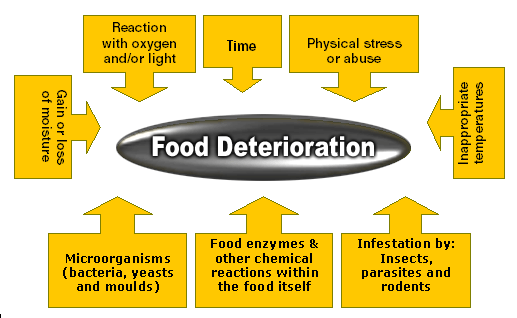Course:FNH200/Lessons/Lesson 05/Page 05.1
< Course:FNH200 | Lessons | Lesson 05
5.1 Food Deterioration: the need for food preservation
Terms to remember |
|
- About 10-20 % of all agricultural commodities are lost each year (pre-harvest deterioration) due to: weeds, insects, microorganisms, rodents and birds.
- All foods (agricultural & aquatic products) undergo varying degrees of deterioration after harvest (post-harvest) and during storage.
- Losses occur in the nutritional value, safety, and aesthetic appeal (colour, texture, flavour).
- Food is subject to physical, chemical and biological deterioration.
- Food deterioration involves: heat, cold, light, oxygen, moisture, dryness, food enzymes, microorganisms and macroorganisms (see figure below).
The objective of food preservation technologies is to delay the onset of spoilage and to enable the creation of new food products from the resource commodities. The different factors that can lead to deterioration of food are shown in Figure 5.1 and are described in more detail in the next sections.
